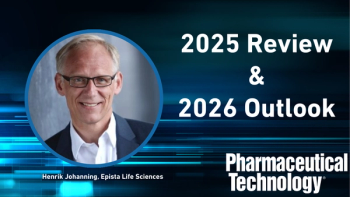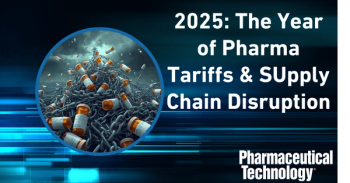
- Pharmaceutical Technology-02-02-2007
- Volume 31
- Issue 2
Is Real-Time Release Through PAT Compatible with the Ideal of "Science-Based Regulation?"
The role of micro-biological testing in real-time release is too important to ignore.
Several recently published articles have promoted the process analytical technology (PAT) initiative as the path to the real-time release (RTR) of finished product. Many strong arguments favor gaining a better understanding and control of our manufacturing processes, but it is not clear that RTR is one of them. The US Food and Drug Administration and other regulatory agencies worldwide are working diligently to base regulation in science, but it is reasonable to ask whether RTR through PAT is compatible with the ideal of science-based regulation. Because my education, background, and training are in the field of microbiology, I will examine the question from this perspective.
What about microbiology in PAT?
One noticeable correlation in the current literature on the promise of PAT to deliver RTR is that the authors are virtually all chemists or regulatory specialists. In the rare publication discussing microbiology and RTR through PAT, this goal is mentioned in only the most off-hand manner (1). This avoidance of a clear discussion of microbiology within the PAT initiative as a contributor to RTR is striking. A review of aseptic manufacturing indicates that the microbiological portions of a manufacturing process delay product release to the greatest extent (2). In fact, the time required for microbiological in-process and release tests virtually defines the critical time line of manufacture and release of product for sale.
The second puzzling aspect of this omission in the current PAT discussion is that the first approvals under FDA's PAT initiative were for microbiological methods (3). The role of microbiological testing in RTR is too important to ignore.
PAT and the microbiology of nonsterile products
Nonsterile products are subject to process controls from a microbiological perspective. Though these controls are not as stringent as those for aseptic manufacture, the US Code of Federal Regulations (21 CFR) clearly requires the manufacturer to produce products free of "objectionable organisms." It must be stressed that FDA's concern about "objectionable organisms" is not the same as the compendial tests for "specified" organisms (4–6), and so the finished product should also be evaluated for the presence of "objectionables" while in quarantine (costing money for warehousing and not being sold).
The implementation of PAT to allow the RTR of nonsterile product would require the manufacturer to establish controls on the process sufficient to ensure that no potentially objectionable organism would gain entry (via raw materials, the environment, personnel, or any other means) into the finished product. In addition, it would require that we have sensitive and accurate measures in real time to confirm this state of control and allow changes to be made in real time to correct any potential issues as they develop. Although it is intellectually possible to envision a system of HACCP-like evaluations in which all contaminants are instantaneously counted, identified, analyzed, and reported, current technology does not come close to delivering such a system (7, 8).
PAT and the microbiology of sterile products
Sterile products can be divided into two main types: terminally sterilized products and aseptically filled products. For clarity, we shall evaluate them separately. RTR through PAT is feasible for sterile products manufactured using terminal sterilization. This process is called "parametric release," which is cited in the PAT guidance and has been well described by FDA (9), the European Medicines Evaluation Agency (10), the Pharmaceutical Inspection Cooperation Scheme (11), the US Pharmacopeia (12), and in the literature (13, 14).
So, what about the aseptic manufacture of sterile product? RTR through PAT requires extensive process understanding and control. Current in-process monitoring capabilities in microbiology do not allow for the determination of finished-product attributes because of excessive variability (15, 16). The plate-count method has a significant gap between the limit of detection (LOD) and the limit of quantification (LOQ). Though the LOD for plate counts is 1, the LOQ has been established to be in the range of 25 (17) to 30 (18).
Here is a major problem of current "regulatory science" being at odds with "science-based regulation." Regulatory expectations are that plate counts can accurately distinguish between a count of 2 colony-forming units (CFU, acceptable quality) and 4 CFU (unacceptable) or between 4 CFU (acceptable) and 6 CFU (unacceptable) for surface monitoring under various conditions. In truth, the plate-count method cannot reliably quantify any number less than 25 CFU (at best).
Without accurate in-process monitoring data upon which to base control decisions, microbiological considerations alone prevent RTR for any product (sterile or nonsterile) strictly through process controls (with the exception of parametric release).
What about rapid microbiological methods (RMM)?
The first approvals under the PAT initiative were for rapid microbiological, finished-product release tests (3). These initial PAT approvals allowed for RTR of product. This application of RMM to finished-product testing has strong potential for RTR (19), but is outside the scope of the initiative as currently defined.
Concerns about the use of RMM in PAT involve the testing location, causal relationships, and assay variability. The current PAT scope restricts itself to in-process controls (preferably in-line), and so limits the opportunities for microbiological test improvements that typically take place at the bench (20). Second, there is a basic scientific issue with the causal relationship among environmental monitoring, in-process microbiological controls, and finished-product microbial quality. The assumption in aseptic manufacture is that increased levels of contaminants in the environment create increased risk for product contamination (21–24).
Though this is undoubtedly true, there is little in the literature to assist in determining at exactly what point the risk becomes significant. In other words, how clean must the environment be to ensure sterile filled product, or how dirty to pose a significant threat? The current standards may be more useful as a quantitative means to determine the state of control in the cleanroom rather than a tool to predict finished-product quality.
Finally, there is significant concern about variability in a predictive in-process method that has been highlighted by Afnan (25), Torbeck (26), and Hussain (27). Current environmental monitoring methods do not provide these data, nor will any rapid method with similar limitations on accurate quantification at low numbers. Because much of this inaccuracy comes from sampling error, it is not likely that rapid methods can be directly applied to resolve this limitation. Getting bad data faster is not a significant improvement over getting bad data more slowly. Neither process will provide sufficient and accurate information upon which to base a process control decision. Until methods are developed that are capable of predicting finished product microbial attributes from in-process assays, the effective use of in-process microbial data within the PAT framework for RTR will be an unattainable goal.
Summary
We do not have the tools to demonstrate acceptable microbial attributes of finished product through in-process controls for nonsterile or aseptically produced sterile products. Thus, the elimination of finished-product testing for microbial attributes is unlikely for the foreseeable future. PAT is a useful process, and one that should be used to its fullest potential. Nonetheless, it cannot lead to real-time release of product under the current regulatory climate (except through the parametric release of terminally sterilized products) unless we ignore good science and establish in-process controls for microbiological purity based solely on regulatory considerations.
Scott Sutton, PhD, is a consultant with emphasis on microbiology and GMP issues at Vectech Pharmaceutical Consultants, Inc., tel. 585.594.8273,
References
1. M.J. Miller, "Rapid Microbiological Methods and FDA's Initiatives for Pharmaceutical cGMPs for the 21st Century, PAT and Sterile Drug Products Produced by Aseptic Processing," Amer. Pharm. Rev.8 (1), 104–107 (2005).
2. D.C. Singer and A.M. Cundell, "The Role of Rapid Microbiological Methods within the Process Analytical Technology Initiative," Pharm. Forum.29 (6), 2109–2113 (2003).
3. P. Newby et al., "The Introduction of Qualitative Rapid Microbiological Methods for Drug-Product Testing," Pharm. Technol. 28 (PAT Suppl.), 6–12 (2004).
4. FDA, Guide to Inspections of Microbiological Pharmaceutical Quality Control Laboratories, http://
5. USP Chapter ‹1111›, "Microbiological Attributes of Nonsterile Pharmaceutical Products," USP Supplement 2 (29), 2969 (2006).
6. S. Sutton, "The Harmonization of the Microbial Limits Tests" Pharm. Technol. 30 (12), 66–73 (2006).
7. S.V.W. Sutton and A.M. Cundell, "Microbial Identification in the Pharmaceutical Industry," Pharm Forum. 30 (5), 1884–1894 (2004).
8. A.M. Cundell, "Microbial Identification Strategies in the Pharmaceutical Industry," PDA J. Pharm. Sci. Technol. 60 (2), 111–123 (2006).
9. FDA, Compliance Policy Guide, #7132A.13, Parametric Release: Terminally Heat Sterilized Drug Products (FDA, Rockville, MD, 1987).
10. European Medicines Agency, CPMP/QWP/3015/99 Note for Guidance on Parametric Release (EMEA, London, UK, Sept. 2001).
11. PIC/S, PI 005-2 Recommendation On Guidance On Parametric Release (PIC/S, Geneva, 2004).
12. USP ‹1222›, "Terminally Sterilized Pharmaceutical Products: Parametric Release," Pharm. Forum30 (5), 1741–1744 (2004).
13. R. Tirumalaie and D. Porter, "Terminal Sterilization and Potential for Parametric Release," Amer. Pharm. Rev.8 (4), 26–31 (2005).
14. J.E. Moldenhauer and R. Madsen, "Parametric Release—Much Ado About Nothing," PDA J. Pharm. Sci. Technol.54 (1), 32 (2000).
15. J.K. Farrington, "Environmental Monitoring in Pharmaceutical Manufacturing: A Product Risk Issue," Amer. Pharm. Rev.8 (4), 26–30 (2005).
16. D. Hussong and R.E. Madsen, "Analysis of Environmental Microbiology Data From Cleanroom Samples," Pharm. Technol. (Aseptic Processing Suppl.), 10–15 (2004).
17. D.M. Tomasiewicz et al., "The Most Suitable Number of Colonies on Plates for Counting," J. Food Prot.43 (4), 282–286 (1980).
18. R. Breed and W.D. Dotterrer, "The Number of Colonies Allowable on Satisfactory Agar Plates," J. Bacteriol.1, 321–331 (1916).
19. J. Moldenhauer and S.V.W. Sutton, "Towards an Improved Sterility Test," PDA J. Pharm. Sci. Technol.58 (6), 284–286 (2004).
20. J. Moldenhauer, "Rapid Microbiological Methods and the PAT Initiative," BioPharm Intl.18 (12), 31–46 (2005).
21. T. Eaton, "Microbial Risk Assessment for Aseptically Prepared Products," Amer. Pharm.Rev. 8 (5), 46–51 (2005).
22. J. Akers and J. Agalloco, "The Simplified Akers–Agalloco Method for Aseptic Processing Risk Analysis," Pharm. Technol. 30 (7), 60–76 (2006).
23. J. Grazel, "Microbiological Compliance and Risk in Aseptic Manufacturing," Amer. Pharm. Rev.9 (3), 10–15 (2006).
24. E.C. Tidswell and B. McGarvey, "Quantitative Risk Modeling In Aseptic Manufacture," PDA J. Pharm. Sci. Technol. 60 (5), 267–283 (2006).
25. A. Afnan, "Harbinger of Change," Eur. Pharm. Rev. 10 (2), 85–90 (2005).
26. L.D. Torbeck, "PAT: Déjà vu All Over Again?" PDA Letter. Oct., 11–14 (2006).
27. A.S. Hussain, "Process Analytical Technology: A First Step in a Journey Towards the Desired State," Process Anal. Technol. 2 (1), 8–13 (2005).
Articles in this issue
almost 19 years ago
February 2007almost 19 years ago
The Impact of Impurity Analysis on Future Regulationsalmost 19 years ago
Industry, Regulators Move to Adopt Quality Standardsalmost 19 years ago
Twenty-Two Warningsalmost 19 years ago
Packaging Predicamentsalmost 19 years ago
Justifying the Meansalmost 19 years ago
Innovations in API Synthesisalmost 19 years ago
Merger and Acquisition Drivers Remain in Place for 2007Newsletter
Get the essential updates shaping the future of pharma manufacturing and compliance—subscribe today to Pharmaceutical Technology and never miss a breakthrough.




